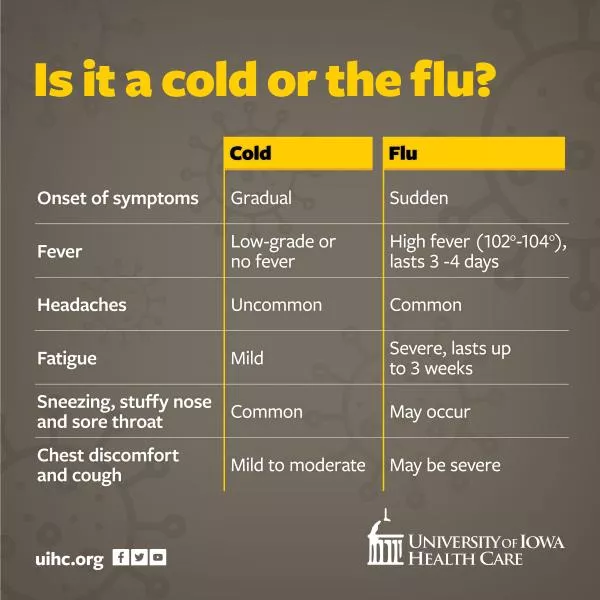Timely tips for keeping flu-free this season
Health specialists say it’s important to take precautions to help prevent illness and the potentially serious complications that can occur.
Ways to reduce your risk
- Get vaccinated for influenza.
- Avoid close contact with people who are sick. When you are sick, keep your distance from others to protect them from getting sick too.
- Cover your nose and mouth with a tissue or the crook of an arm or sleeve, not your hand, when coughing or sneezing.
- Avoid touching your eyes, nose or mouth.
- Wash hands with soap and water frequently—particularly after sneezing—or use an alcohol-based hand gel.
Know the difference between a cold and the flu
Both illnesses can cause a fever, but it’s more common with the flu. Colds may cause a low-grade fever, but fevers with the flu can be 102 degrees or more and can persist for three or four days. Not everyone with flu will have a fever.
Headaches rarely accompany a cold but are common with the flu.
Achiness is typically mild with a cold and often severe with the flu.
Mild tiredness sometimes occurs with colds, but the flu usually starts with a period of exhaustion and fatigue lasting up to three weeks.
These are the most frequent symptoms of a cold but can also occur with the flu.
These symptoms are generally mild to moderate with colds but can be severe with the flu.
Children often will have these symptoms with flu, but not with colds.

If you get the flu
- Most people with influenza will not need to seek treatment.
- You don’t need to go to the Emergency Department to receive evaluation.
- The UI Health Care primary care family medicine sites, Urgent Care, and all Quick Care sites offer evaluations and flu tests that provide results quickly.
When emergency care may be needed
Watch for these signs in infants
- Being unable to eat
- Has trouble breathing
- Has no tears when crying
- Significantly fewer wet diapers than normal
Watch for these signs in children
- Fast breathing or trouble breathing
- Bluish skin color
- Not drinking enough fluids
- Not waking up or not interacting
- Being so irritable that the child does not want to be held
- Flu-like symptoms improve but then return with fever and worse cough
- Fever with a rash
Watch for these signs in adults
- Difficulty breathing or shortness of breath
- Pain or pressure in the chest or abdomen
- Sudden dizziness
- Confusion
- Severe or persistent vomiting
- Flu-like symptoms that improve but then return with fever and worse cough
